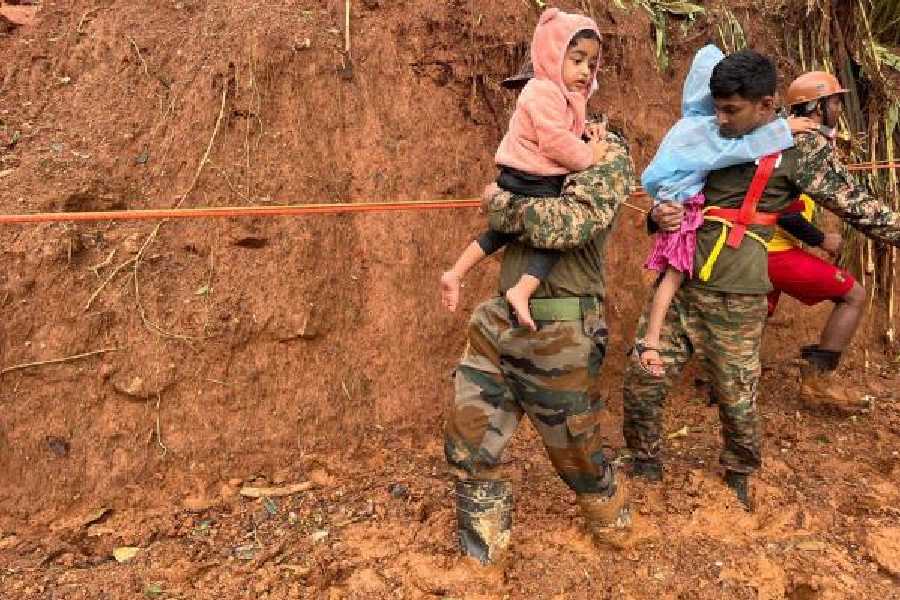Home minister Amit Shah on Wednesday said the Centre had issued a warning to Kerala a week before the devastating landslides in Wayanad, a claim that chief minister Pinarayi Vijayan promptly dismissed.
“On July 23, the government of India had given an early warning to Kerala government. Early warnings were also given on July 24 and 25. On July 26, the Kerala government was warned about heavy rainfall and possibilities of landslides,” Shah said during a discussion on the calamity in the Rajya Sabha.
Shah said nine NDRF teams were sent to Kerala on July 23 and three more battalions were dispatched on Tuesday. He added that the Narendra Modi government was taking steps to rescue and rehabilitate the affected people.
“What did the Kerala government do? Why were people not shifted?” Shah asked.
He said the state governments were responsible for shifting people to safer places before a calamity. He hailed the then Odisha government under Naveen Patnaik and the Gujarat government for acting fast on warnings about cyclones issued by the Centre.
Shah said the Union government had spent ₹2,323 crore on early warning systems since 2014. He said India was among the top four-five countries to have the capability to forecast disasters seven days in advance.
Disputing Shah’s claims on repeated warnings, Vijayan said they were merely routine weather alerts and the epicentre of the landslide was at least 7km from the spot about which the warning was issued.
Vijayan said the IMD issued only an orange alert even on the day when the landslides swept Mundakkai and Chooralmala.
“Not even once before the landslides was there any red alert in that area. They (the IMD) issued a red alert only at 6am, that too after the landslides,” he said.
“I am not trying to blame anyone. Neither is this the time to get into a blame game. But the home minister asked what Kerala did even after being alerted. The IMD’s weather forecast said there would be rain between 115mm and 204mm in that area. But how much did it rain there? In the first 24 hours (after the alert) there was 200mm and in the next 24 hours another 372mm. So in 48 hours, this area received 572mm rain, which is way more than predicted by the alert,” he said.
Neither the Geological Survey of India (GSI), which operates a landslide warning system in Wayanad, nor the Central Water Commission, which issues flood warnings, came up with anything that would have prompted the authorities to evacuate the area. Vijayan said the CWC had not given any flood warning in the area from July 23 to 28.
The GSI’s landslide forecast bulletin dated July 29 put Wayand in the “green” zone with a “low possibility” of landslides. It stated that “a few small landslides may occur” in Mananthavady, Vythiri and Sultan Bathery taluks. However, the landslides hit Meppadi near Kalpetta. Green is the safest in the colour chart compared with yellow, orange and red.
The IMD weather report for July 29 placed Wayanad on orange alert with a likelihood of “very heavy rainfall”.
Vijayan denied Shah’s claim that additional NDRF teams had already been deployed in the state based on the alerts. “Nine NDRF teams were deployed as a matter of routine, as we do during monsoon, well before the rain started. One team was in Wayanad as part of a routine operation. The Centre should ideally take action to counter the impact of climate change,” he said.











